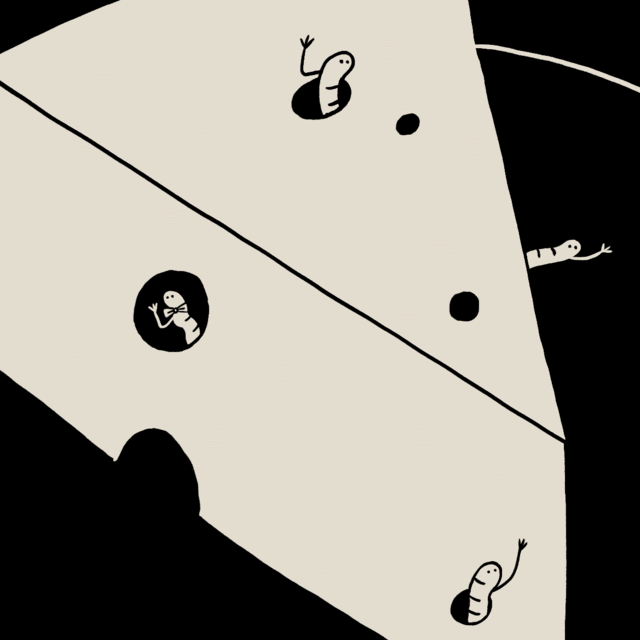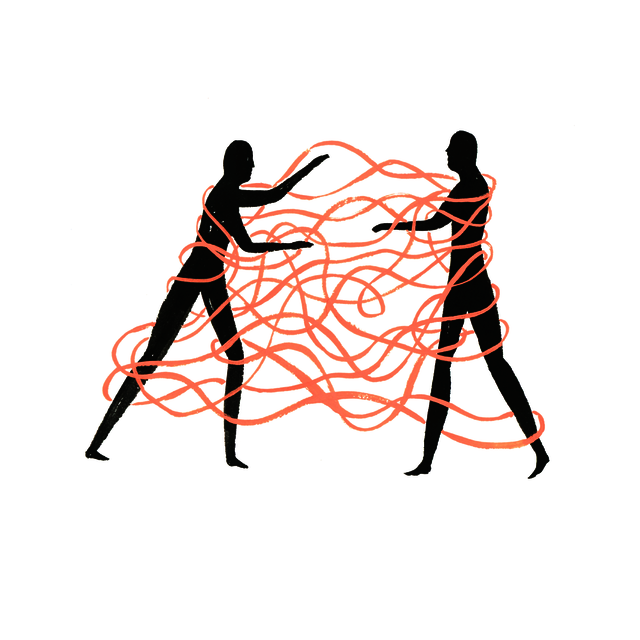
The Secret History of Sea Monkeys
By Mikki Halpin
Illustrated by Lydia Ortiz
In 1957, entrepreneur Harold von Braunhut invented powdered magic—little packets of dried brine shrimp eggs that would revive and hatch when added to water. Brilliantly, in 1962, when he put them on the market, he skipped their scientific name, Artemia, in favor of the more evocative, although wholly inaccurate Sea-Monkeys. They sold like wildfire, because who doesn’t want to feel like a goddamn god, throwing some powder in a tank of water and seeing life itself emerge? Sadly, when they turned out to be brine shrimp and not monkey-like at all, Sea-Monkeys became somewhat of a cultural joke. You know what? Unfair. It’s not their fault. They still are reborn in little plastic tanks nationwide all the time and it’s beautiful. Here, an illustrated and slightly embellished history of our friends the Artemia.
• • •

66 million years ago: Sea monkeys, sentient brine shrimp with a technologically advanced civilization, sense a massive asteroid headed for Earth. Planet-wide destruction is imminent. In order to save the species from extinction, the sea monkeys freeze-dry their eggs into a state of suspended animation and throw them into the sea, hoping they will survive. The adult sea monkeys welcome the impact with open arms, confident that their descendants will survive in mother ocean.
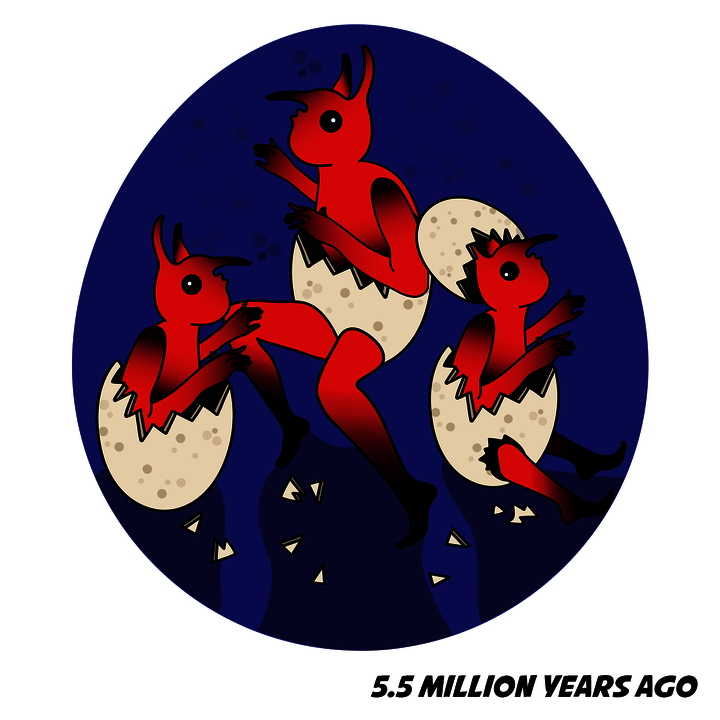
5.5 million years ago: After centuries of cryptobiosis, the sea monkey babies begin to hatch from their eggs. The young shrimp float upward toward the surface, eager to see what the world has become. They have no idea that an asteroid not only wiped out every trace of their civilization—and the dinosaurs, which they never liked anyway—it set off a new evolutionary chain that would result in the primacy of humans above all other species. They are appalled, but resolve to use their superior intelligence and nonthreatening appearance to live wild and full lives, preferably by grifting off Homo sapiens.
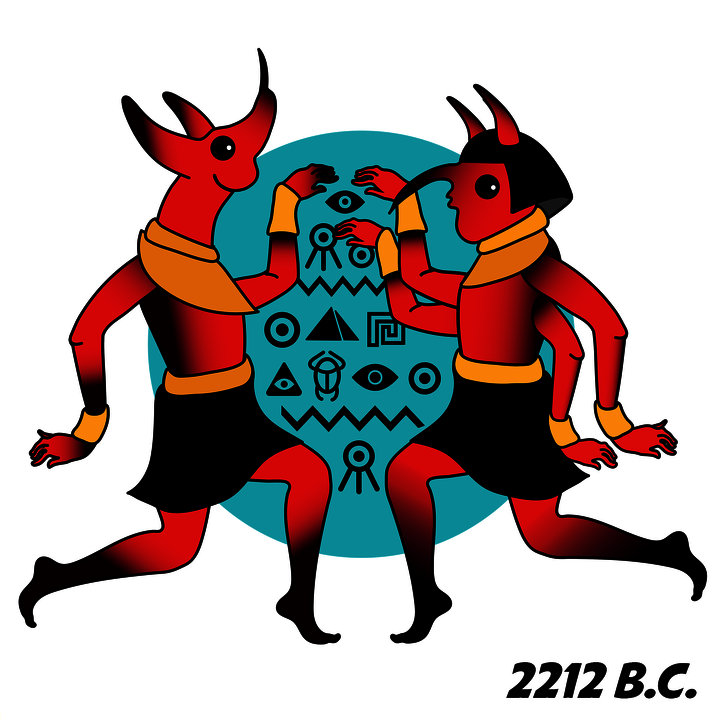
2212 B.C.: The pharaoh Khafre encounters a group of sea monkeys frolicking near the Nile and believes they are gods. They don’t argue. Khafre orders pyramids to be built in their honor, and the sea monkeys happily accept gifts from worshippers. They laugh at crude mummification tactics, wondering whether the humans will ever figure out how to return from the dead, as they did. But when Khafre overhears the Artemia joking about the Sphinxes, he calls for their execution. The sea monkeys narrowly escape, and go deep into hiding for centuries.
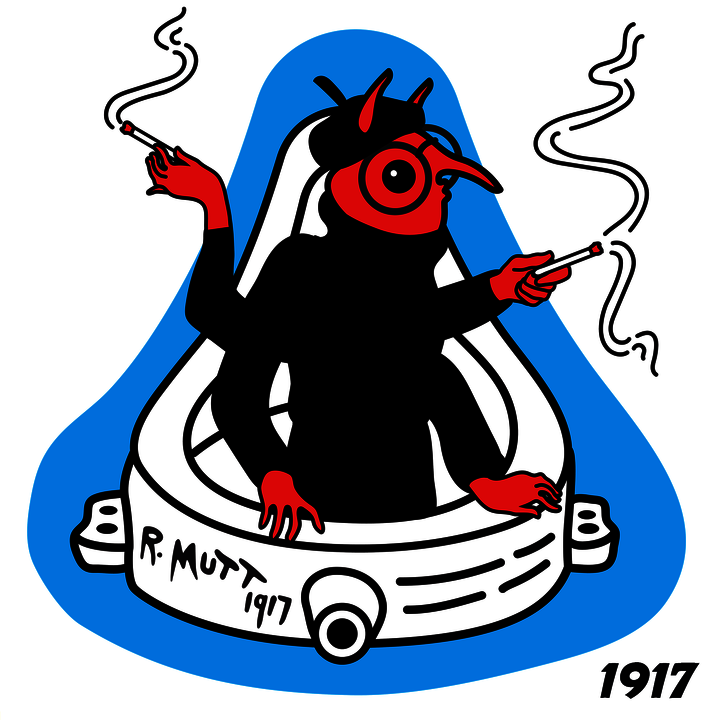
1917: The sea monkeys are living clandestinely in New York City, where they encounter Marcel Duchamp. He is blown away by their bohemian lifestyle, revering their surreal aesthetic. Duchamp creates his famed Fountain in the sea monkeys’ honor, symbolizing Artemia’s ability to renew itself, even when disguised as waste. The sea monkeys think his work is worse than Khafre’s, and beg Duchamp to take all the credit.

1962: Taking a note from the popularity of ant farms, inventor Harold von Braunhut markets a brine shrimp product as collectible Sea-Monkeys. Illustrator Joe Orlando creates animated Sea-Monkeys ads, with cartoons that look nothing like the original sea monkeys or the ones von Braunhut is selling, and sales skyrocket. The sea monkeys cannot believe what idiots humans are.
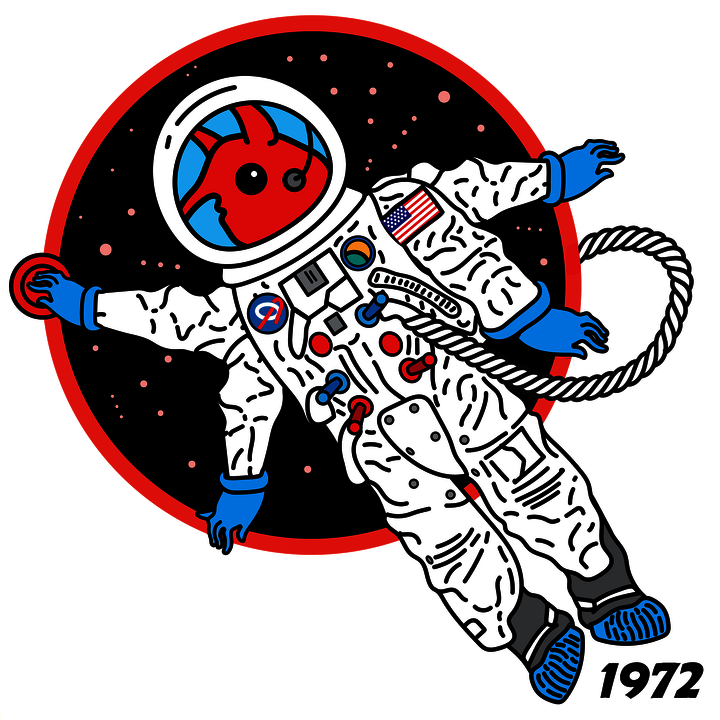
1972: Americans learn that Sea-Monkeys are “only brine shrimp,” but continue to be fascinated by their abilities, while real sea monkeys live on in secrecy. Astronaut Buzz Aldrin brings sea monkey eggs to the moon on the Apollo 16 mission in order to study them. Nothing happens. The world is puzzled. The sea monkeys realize that no one is ever going to catch on, and decide to rejoin society. They want to party.

1979: The sea monkeys love disco! Becoming fast friends with Bianca Jagger and Andy Warhol, they hit Studio 54 nightly. A young Anderson Cooper meets them and tells all his friends at school, but no one believes him. Sea monkey biology allows them to ingest vast amounts of drugs and alcohol with no ill effect, and they are great dancers. Everyone loves them, but they still disdain humans and their stunted evolution. One sea monkey has an affair with John Travolta, but cuts it off after seeing a few episodes of Welcome Back, Kotter. He is banished from sea monkey society for human fornication.
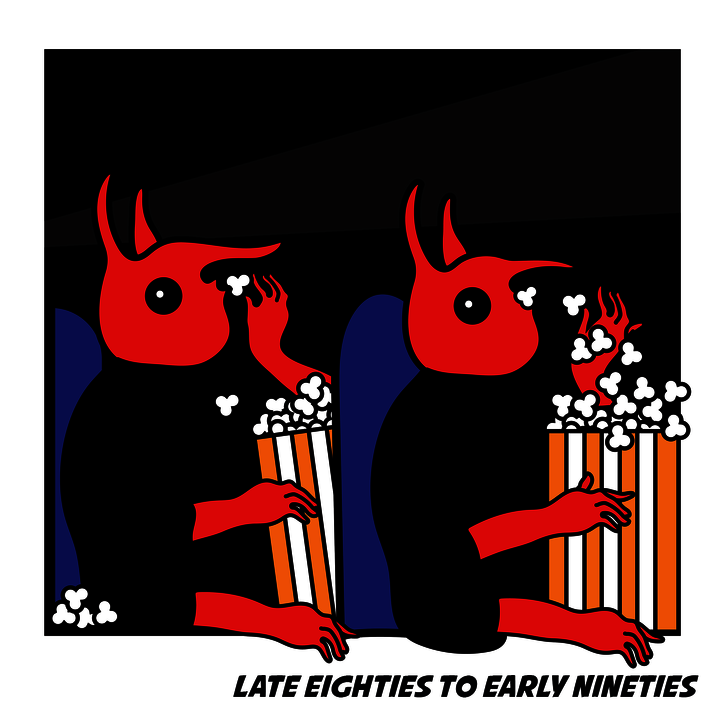
Late 1980s to early 1990s: Fearing exposure in New York (Anderson Cooper won’t shut up), the sea monkeys move west to Hollywood, a community that has already accepted Scientology and veganism as legitimate lifestyles. The entertainment industry, like most human societies, finds the sea monkeys charismatic and sexy. The Artemia live openly, occasionally claiming to be actors preparing for roles as extras in alien movies when they don’t feel like wearing clothes. Some actually end up booking gigs in films, including Close Encounters of the Third Kind, E.T., and Contact. They go to see themselves over and over.

1993: Grunge has hit, and the sea monkeys, who turn out to be a species of trend whores, smell the nihilism. They migrate to the Pacific Northwest, form bands, and work in coffee shops. They fight among themselves about the relative merits of Pearl Jam versus Nirvana—but they all agree that the Gits outshine both bands. A few of them sell out. In the end, they all do.
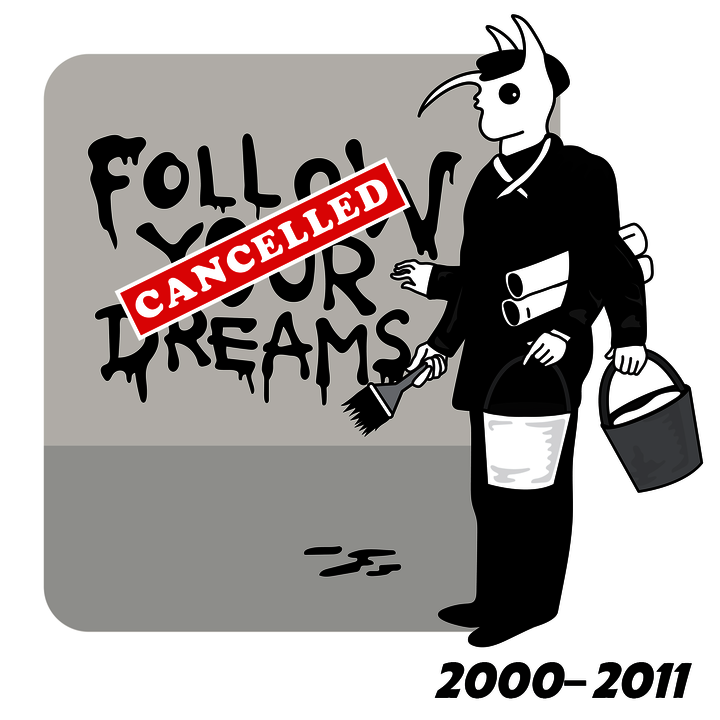
2000–2004: Once the Human Genome Project is completed, the sea monkeys confront their own genetic reality. Despite being around for millennia, Artemia aren’t evolving physically, and in a shallow human culture, that means they will never be accepted, despite their advanced intellect and style. They’re depressed by the continued captivity of von Braunhut’s Sea-Monkeys, their mute sibling species that exists only as a human plaything—one that isn’t even selling very much anymore. As the world enters a surveillance state and with xenophobia on the rise, they consider the possibility of freeze-drying their progeny again, hoping for a better future.
After pop-culture nostalgia and ironic populism bring back the Sea-Monkeys craze, the von Braunhut strain is suddenly everywhere again, and the intelligent, disguised sea monkeys are revitalized by a plan to rescue their comrades. They free their counterparts by buying them in large quantities from Archie McPhee catalogs, Urban Outfitters, and other ironic stores. The sea monkeys feel like Artemian PETA. Sometimes they just shoplift the packages, aided by their many limbs. While an unfortunate number of their relatives remain chained to the consumer ecosystem, many are freed. The consumer strain turns out to be less stupid than the free sea monkeys had thought, and a lot sexier. They mate freely and wildly.
2011: The sea monkeys are nearly unmasked as Banksy.
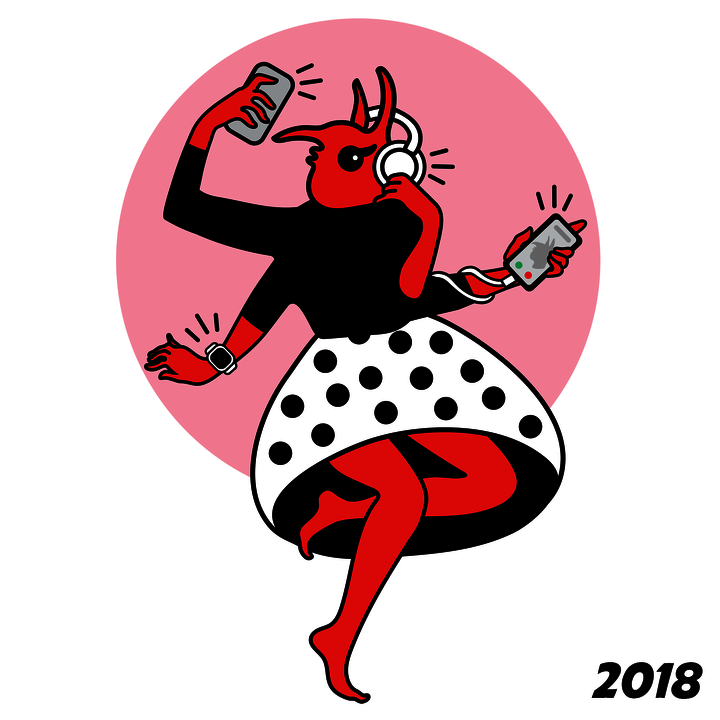
2018: The new strain of sea monkeys are unstoppable and decide that the mission of their species is to destroy consumer culture, their enemy and their captors. It is because of capitalism that they were enslaved, and it is because of capitalism that, even when free, they are considered lesser beings because they are microscopic and have lots of legs. The ancient knowledge of the original sea monkeys and the social savvy of the von Braunhut strain unite to become a cultural weapon. Their disguises become more crafty than ever. The hybrids move on to social media, where having multiple limbs is a huge advantage. They tweet, Instagram, and Snapchat incessantly. They duckface. They become micro and major influencers. Some become Scientologists and others get reality-show deals. Their power grows and grows, as they prepare to take down humankind once and for all through its greatest weaknesses: vanity and the desire for acceptance. When they once again rule the planet, they plan to freeze-dry Homo sapiens as the ultimate retribution. Until then, they walk among us.
MIKKI HALPIN is the editor in chief of Damn Joan. She likes to tweet.
LYDIA ORTIZ is a Manila-born illustrator and designer based in New York and San Francisco.

